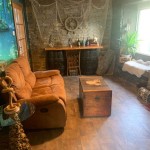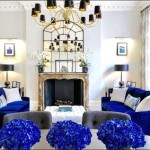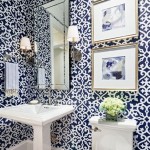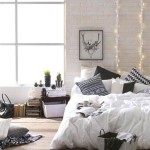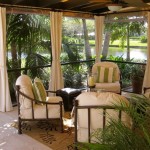How to Decorate an Oblong Living Room
Decorating an oblong living room presents unique challenges due to its elongated shape. The proportions can make the space feel narrow and awkward if not approached thoughtfully. Successfully decorating such a room involves careful space planning, furniture selection, and strategic use of color and lighting. The goal is to create a balanced, functional, and aesthetically pleasing environment, mitigating the visual imbalance inherent in the room's dimensions.
Effective design begins with recognizing the inherent limitations and opportunities presented by the oblong shape. The long walls can feel overwhelming, while the shorter walls might appear insignificant. Addressing these issues requires a multi-faceted approach, considering traffic flow, focal points, and the overall visual impression of the room. A well-decorated oblong living room will feel cohesive and inviting, rather than cramped and disproportionate.
Zoning and Space Division
One of the primary strategies for dealing with an oblong living room is to divide it into distinct zones. This technique breaks up the long, narrow space into more manageable and functional areas. These zones can serve different purposes, such as a seating area, a reading nook, or even a small home office. Defining these areas visually and physically helps to create a sense of balance and purpose within the room.
Several methods can be employed to define zones effectively. Area rugs are a powerful tool for visually separating spaces. Placing a rug under a seating arrangement instantly defines that area as a distinct zone. Different rug patterns and colors can further emphasize the separation between zones. The rug should be appropriately sized for the furniture within the zone; it should ideally extend at least partially under the front legs of the seating.
Furniture placement also plays a crucial role in zoning. A strategically placed sofa can act as a natural divider between two zones. For example, the back of a sofa can delineate the seating area from a dining space or a walkway. Similarly, bookshelves or console tables can serve as physical barriers, subtly separating different areas while still allowing for visual connection and light flow. Consider the scale of the furniture used as a divider; it should be proportionate to the room and not obstruct the overall flow of movement.
Color is another effective tool for defining zones. Using different paint colors or wallpaper patterns on the walls can visually separate areas. For instance, a lighter color on the walls of the seating area can make it feel more open and inviting, while a darker color on the walls of a reading nook can create a sense of coziness and intimacy. The color palette should be cohesive, complementing the overall design scheme of the room.
Lighting can further enhance the definition of zones. Different types of lighting can create different moods and atmospheres in each area. Ambient lighting, such as overhead fixtures, provides general illumination. Task lighting, such as floor lamps or table lamps, focuses light on specific activities, such as reading or working. Accent lighting, such as spotlights or picture lights, highlights decorative elements and adds visual interest. By layering different types of lighting, one can create distinct zones with varying levels of brightness and warmth.
Furniture Selection and Placement
Choosing the right furniture is essential for maximizing space and creating a balanced look in an oblong living room. Avoid oversized furniture that overwhelms the space and hinders movement. Instead, opt for pieces that are appropriately scaled to the room's dimensions. Consider the overall style of the room and choose furniture that complements the aesthetic.
The placement of furniture is just as important as the selection. Arranging furniture in a way that encourages conversation and facilitates movement is key to creating a functional and inviting space. Avoid lining all the furniture against the walls, as this can accentuate the elongated shape of the room and make it feel even narrower. Instead, try floating some pieces away from the walls to create a more dynamic and balanced arrangement.
In a long, narrow room, consider breaking up the linearity by arranging furniture in a more circular or diagonal pattern. This can help to soften the sharp angles of the room and create a more visually appealing layout. For example, placing a coffee table in the center of the seating area can anchor the space and provide a focal point. Angling a sofa or chairs can also break up the linear arrangement and create a more interesting visual effect.
Consider using multi-functional furniture to maximize space efficiency. A coffee table with built-in storage can provide a place to store magazines, books, or other items, helping to keep the room clutter-free. A sofa bed can provide extra sleeping space for guests, while a storage ottoman can serve as both a footrest and a storage container. By choosing furniture that serves multiple purposes, one can maximize the functionality of the room without sacrificing style or comfort.
Mirrors are a powerful tool for creating the illusion of space. Placing a large mirror on one of the long walls can visually expand the room and make it feel more open and airy. Mirrors also reflect light, which can brighten up the space and make it feel more inviting. Consider placing the mirror strategically to reflect a window or another source of natural light.
Color and Lighting Strategies
Color and lighting play a crucial role in shaping the perception of space in an oblong living room. Using color strategically can help to balance the dimensions of the room and create a more harmonious visual effect. Similarly, careful lighting can enhance the mood and atmosphere of the room and highlight its best features.
To minimize the elongated look of the room, consider using lighter colors on the long walls and darker colors on the short walls. This technique can visually shorten the long walls and make the room feel wider. Conversely, painting the short walls in a lighter color can make them appear to be closer, creating a more balanced sense of proportion. The color palette should be cohesive and complement the overall design scheme of the room.
Avoid using dark colors throughout the room, as this can make it feel cramped and oppressive. Instead, opt for lighter, brighter colors that reflect light and create a more open and airy feel. Accent colors can be used to add pops of interest and personality to the room. Consider using contrasting colors to highlight architectural features or to create a focal point.
Lighting is essential for creating a welcoming and functional living room. Layering different types of lighting can create a more dynamic and interesting effect. Ambient lighting provides general illumination, while task lighting focuses light on specific activities. Accent lighting highlights decorative elements and adds visual interest.
In an oblong living room, it is particularly important to pay attention to the placement of lighting fixtures. Avoid placing all the lighting fixtures along the center of the room, as this can accentuate the elongated shape. Instead, distribute the lighting fixtures evenly throughout the room to create a more balanced and inviting atmosphere. Consider using sconces on the walls to add ambient light and to create a more intimate feel.
Natural light is always desirable in a living room. Maximize natural light by using sheer curtains or blinds that allow light to filter through while still providing privacy. Avoid using heavy curtains that block out natural light. Consider placing mirrors opposite windows to reflect natural light and brighten up the space.
By carefully considering color and lighting, one can transform an oblong living room into a stylish and functional space that is both inviting and visually appealing. The key is to use color and lighting strategically to balance the dimensions of the room and to create a harmonious and cohesive design scheme.

How To Decorate A Long Narrow Living Room So Much Better With Age

17 Long Living Room Ideas Home Design Lover Narrow Rectangular Rooms

How To Arrange Furniture In A Long Narrow Living Room Solutions For Tricky Spaces
:max_bytes(150000):strip_icc()/decorate-long-narrow-living-room-2213445-04-96b1f74b88d343cba835f6e13fbd50df.jpg?strip=all)
Ideas For Decorating A Long And Narrow Living Room

How To Maximize The Potential In A Long Narrow Living Room Patticake Wagner Style

Un Awkward The Living Space Smart Ways To Decorate A Long And Narrow Room Hipcouch Complete Interiors Furniture

How To Arrange Furniture In A Long Living Room Grace My Space

Ways To Arrange Furniture In A Narrow Living Room Kate Wiltshire Design

How To Decorate A Long Narrow Living Room Lesley Myrick Interior Design Boutique Designer In Macon Ga

17 Long Living Room Ideas Home Design Lover Narrow
